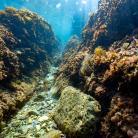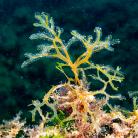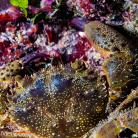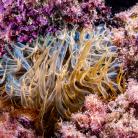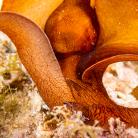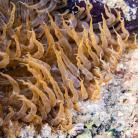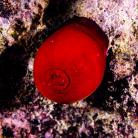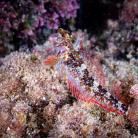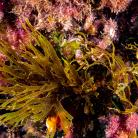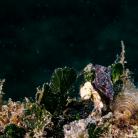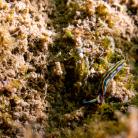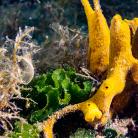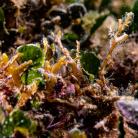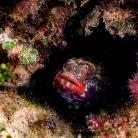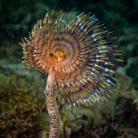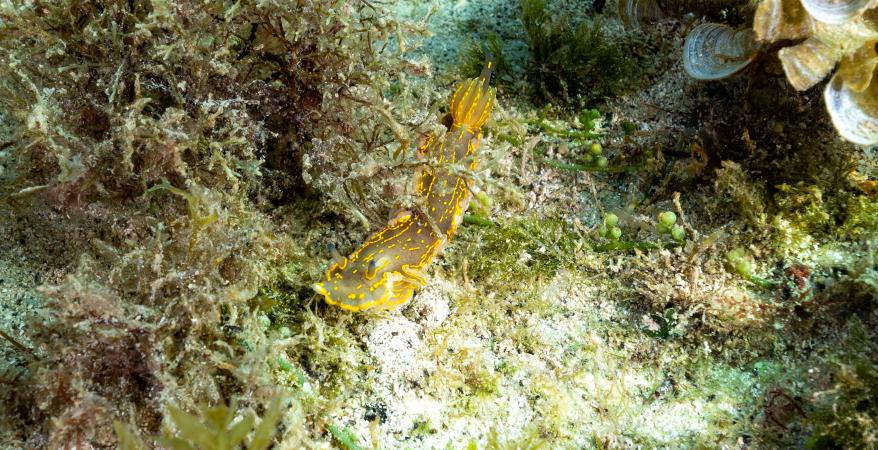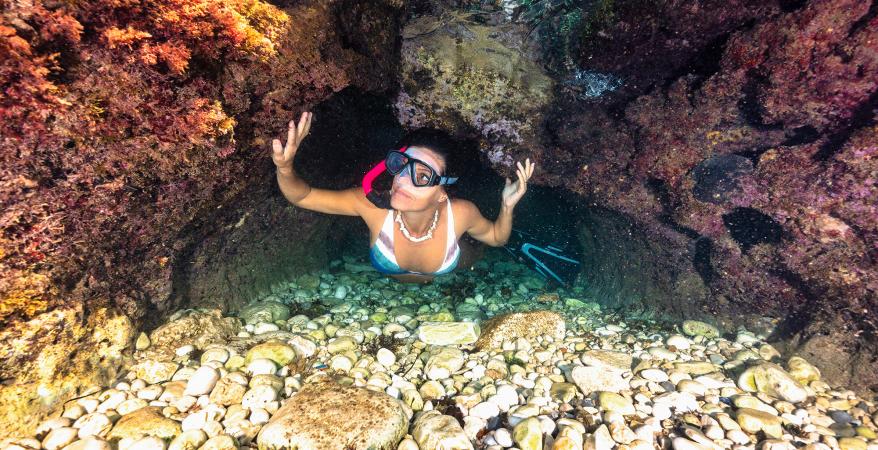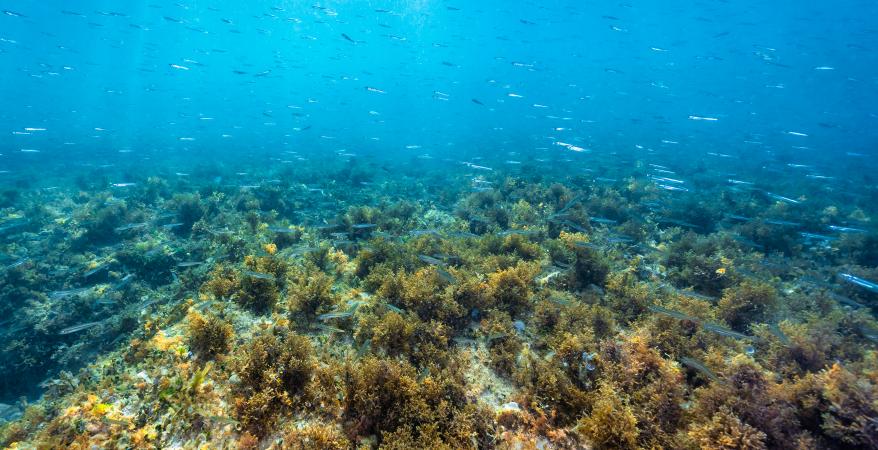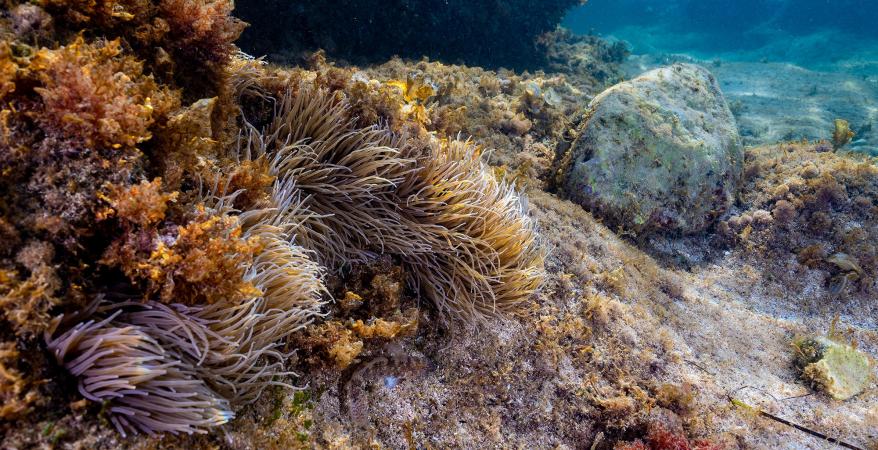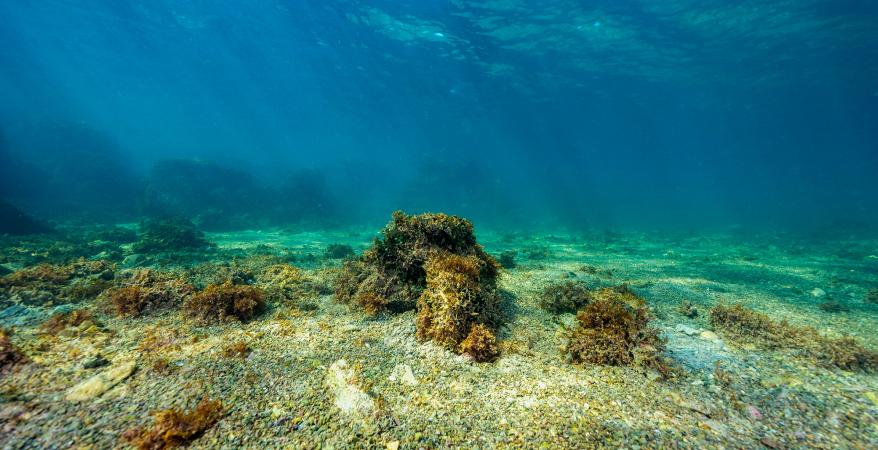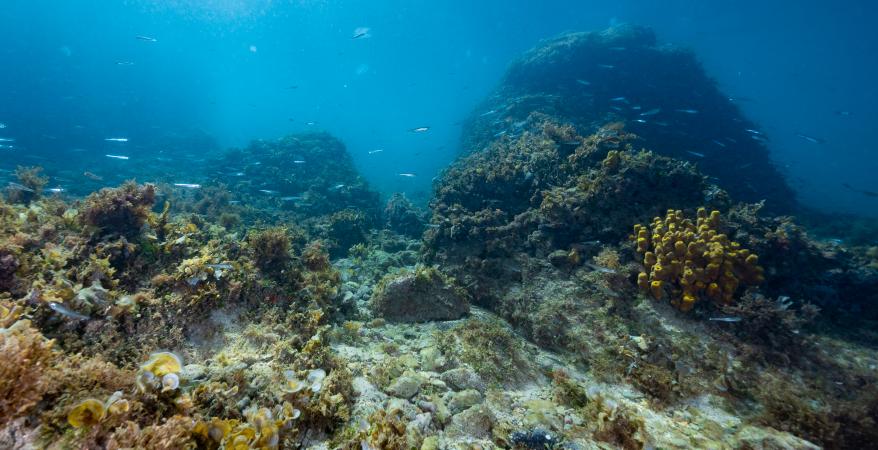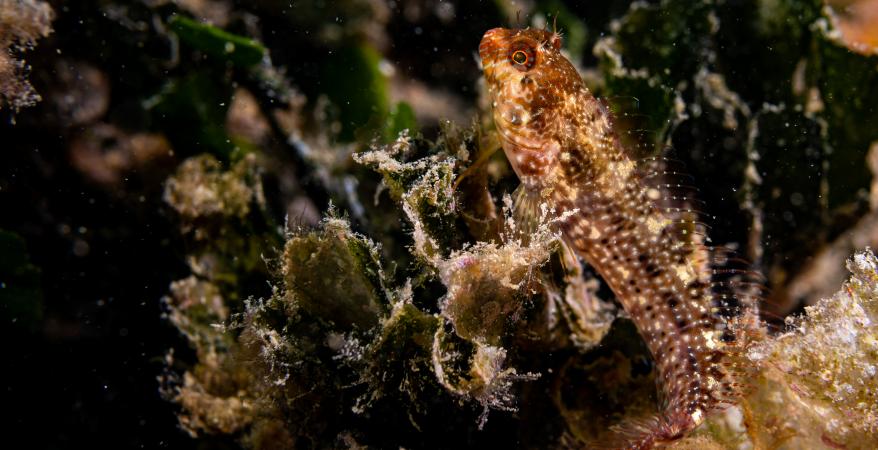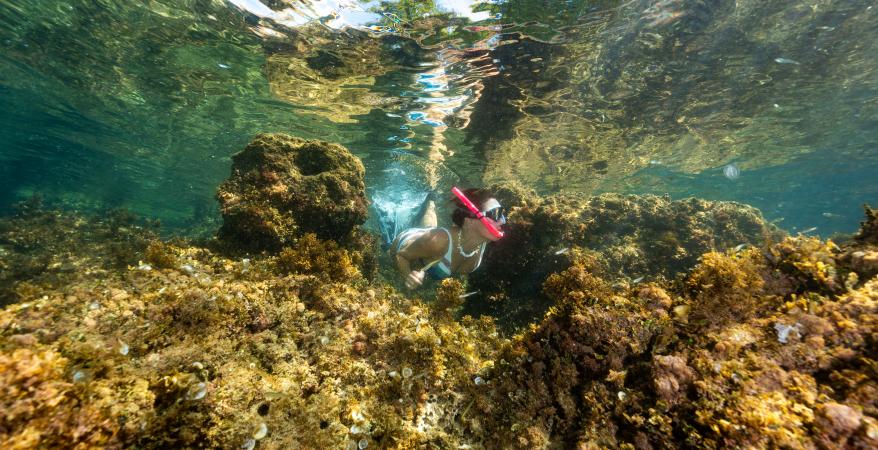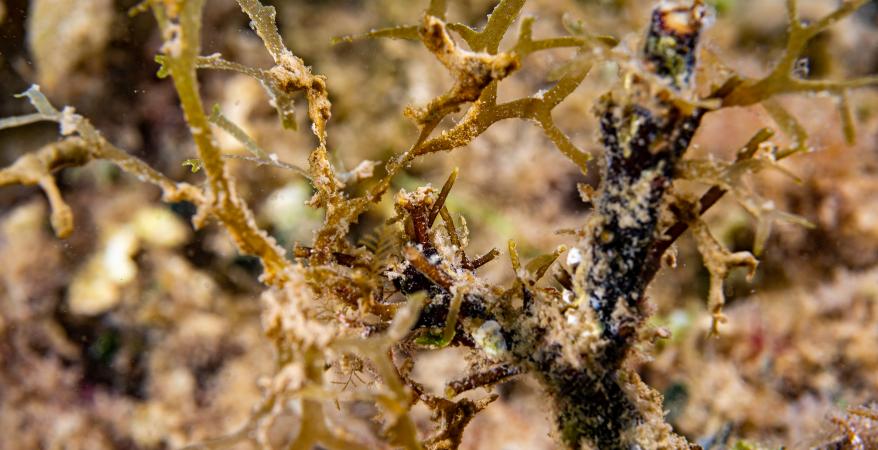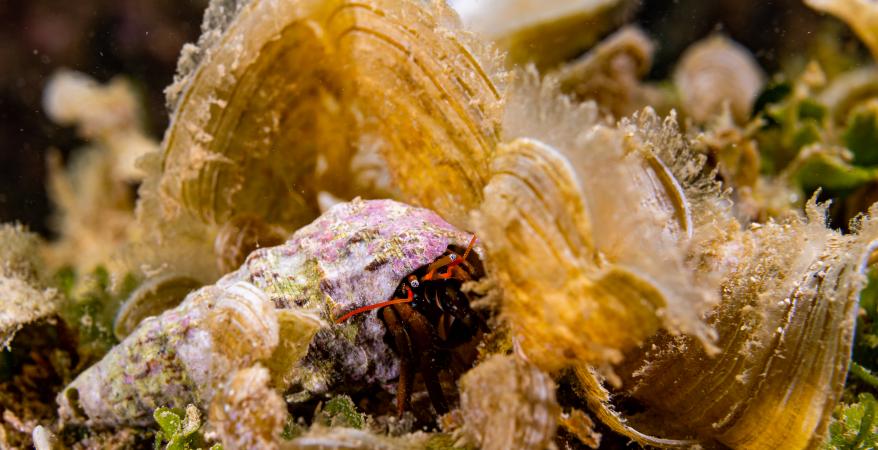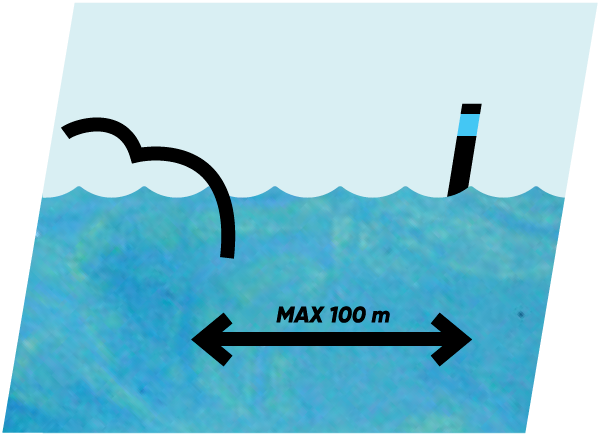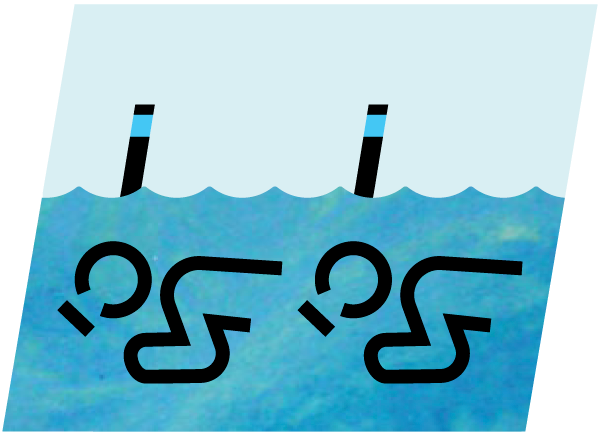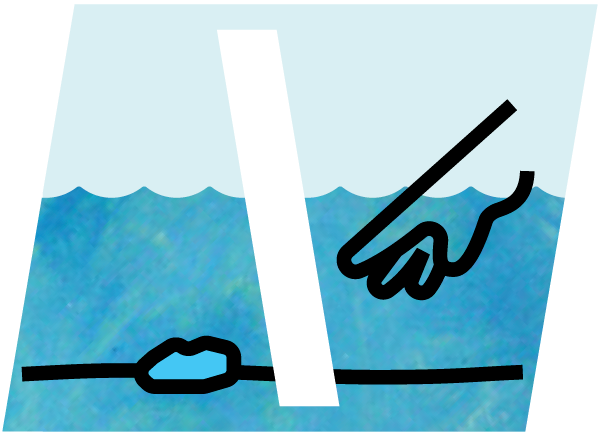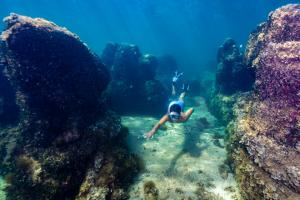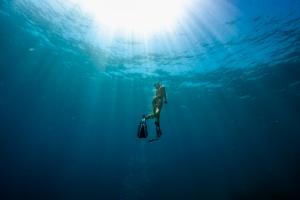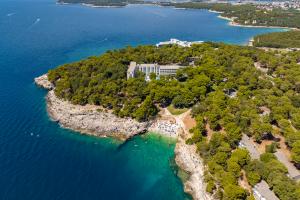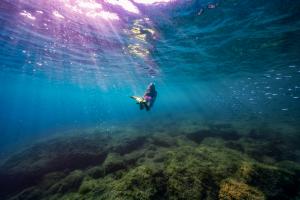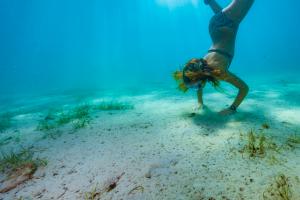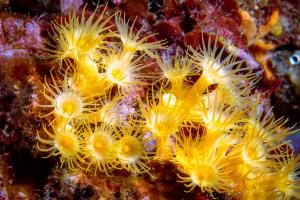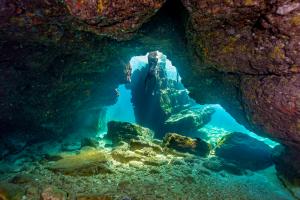Bijela uvala
In the beautiful scenery of the western Istrian coast, on a small peninsula in the Bijela uvala campsite, near Cape Jurina, there is an attractive underwater location for snorkeling enthusiasts. On the right side of the peninsula, looking towards the sea, there is a large paved sunbathing area reachable by the coastal promenade. The view overlooking the three islets-Frižital, Sridnji and Bili školj - will surely leave you breathless.
When you reach the sunbathing area, you will notice the stairs for getting into the sea, one of which descends to a small pebble beach sheltered by a tree canopy. But if you want to get to the most interesting part right away, choose the stairs under the shower.
This site hides two small caves. One is located on dry land, right opposite the steps for getting into the sea, and is reserved for the youngest visitors. The entrance to the cave is from the above. As the sea only enters at low tide, it is a true pirate's hideout!
The second cave is located to the right of the entrance stairs, underwater. Next to it there is a stone column that holds the roof of rocks alongside the entrance itself. A small sandy path ends with tiny cobbles and shows you the entrance to the cave. The bottom is only a meter deep, and you can enter it and lift your head slightly because there is a small opening on the ceiling through which a faint light passes. Before you enter, pause for a moment in front of the cave and dive a little to find the space for the ascent. The walls of the cave are decorated with purple and bright red algae. There is enough room in the cave, but only for one person!
The exploration of outer walls, in front of the entrance to the cave, is equally interesting. The rocks, due to their shadowy position, are covered with red and brown algae in all shades of pink and dark red. This is where the warty crab, called by the locals grma or grancipor, hides. The citizens of Funtana organize the entire festival around it because the grma is a real treat in the brodetto.
The warty crab can be recognized by its solid brown armor with yellow spots and large pliers. It lives in holes and cuts in a rock overgrown with algae. It hides during the day, but at night it goes hunting and comes out to the surface. It takes a defensive stance by spreading its pliers as a sign of greeting, but do not be fooled - do not touch it in any case! Its pliers are strong and can pinch hard.
The seabed is smooth in its shallow part, while the rocks are undulating as if pushed into the ripples. Shoals of small fish circulate in all directions, chased by the needlefish and the common dentex, like a shepherd. The needlefish has a characteristic shape resembling a needle, hence its name. They are relentless hunters of small fish, and swim just below the surface. The common dentex is recognizable by the oval shape of the silvery pink body and the steep profile of the large head, sprinkled with dark or bluish spots. It is very careful, but also fast, and has four pointed teeth that stand out as soon as you see it.
On the mixed rocky bottom, you can also find colourful sea slugs (Nudibranchia), such as Hypselodoris picta with a scaly rosette on the back, resembling a palm tree. This specimen is one of the larger sea slugs, and can reach a length of 10 centimeters, while the other species are usually only 2 centimeters long. You can also spot a very small slug (Thuridilla hopei), dark purple with white, yellow and blue stripes. At Bijela uvala, one can also find a sea hare (Aplysia punctata) grazing on algae and swaying to the rhythm of the waves. This is a larger slug that can grow up to 25 centimeters. Its tentacles resemble hare ears, while its lateral growths are used for swimming.
You can continue exploring the snorkeling location of Bijela uvala along the coast line which features interesting formations of large rocks, completely overgrown with algae of various shapes and soft sponges. This location is a real gathering place for small fish. This is a hiding haven of the brown wrasse with its black and blue colour and turquoise fin edges, as well as of small fish such as the Doderlein's wrasse and the five-spotted wrasse, which pattern resembles checkered in brown tones, most often socializing in small shoals.







